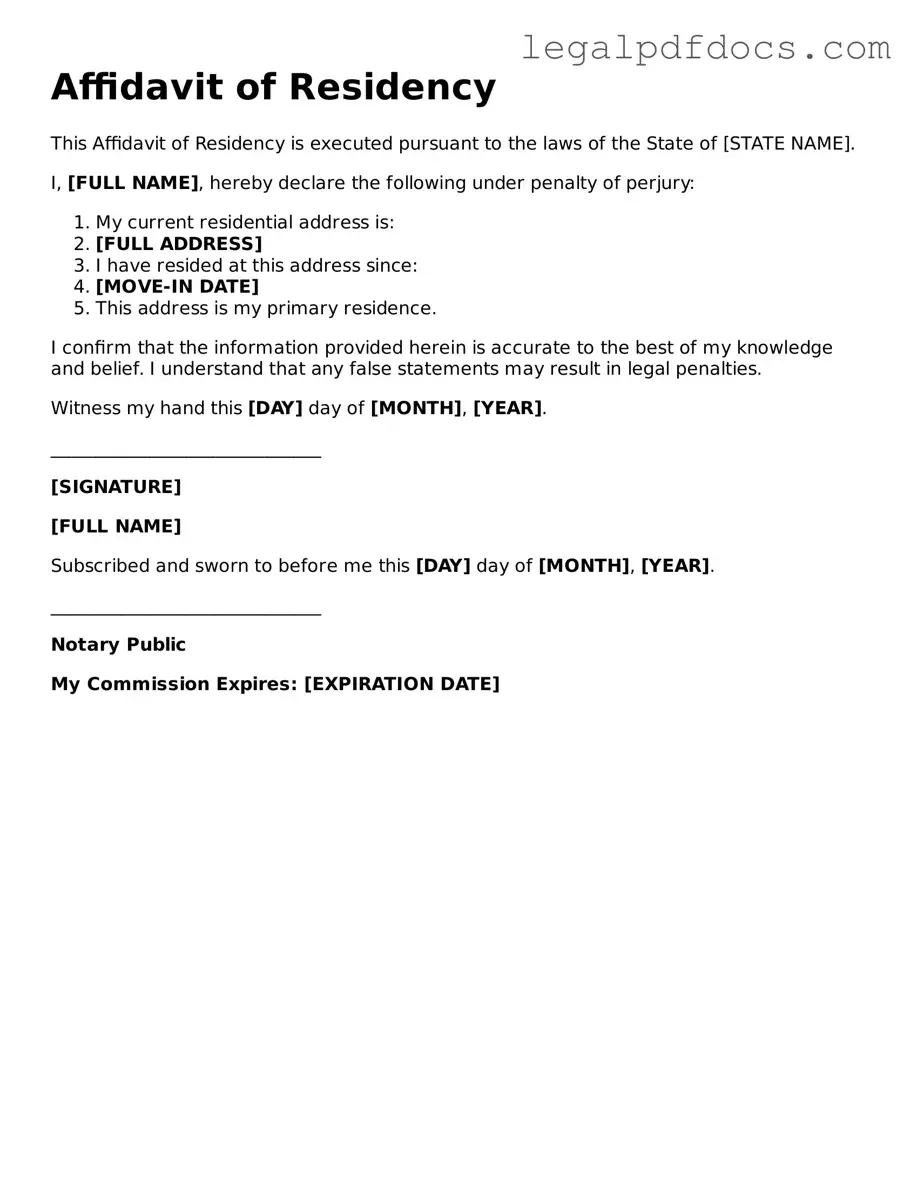Affidavit of Residency Template
An Affidavit of Residency is a legal document that verifies a person's residence at a specific address. This form is often used for various purposes, such as enrolling children in school or applying for government assistance. Understanding how to fill out this form correctly is essential for ensuring your residency is officially recognized.
Ready to get started? Fill out the form by clicking the button below.
Open Affidavit of Residency Editor Here
